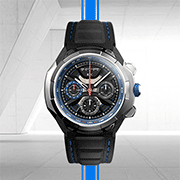Registration No: GU 7770
Chassis No: 65WR
MOT: Exempt
Full engine overhaul started by Fiennes Engineering but never completed
Tourer coachwork by Calderbank's Coachbuilders of Orrell
Matching chassis and engine numbers
Believed to be mostly complete with all significant components present
"After seven years of experiment and test, the 40/50hp six-cylinder Phantom chassis emerged, and is offered to the public as the most suitable type possible for a mechanically-propelled chassis under present-day conditions" (New Phantom launch brochure, May 1925).
By 1925, the Rolls Royce Silver Ghost had been upstaged by a younger generation of more technically advanced luxury cars. The glory days of the 1913 Alpine Trials had long passed and both F. Henry Royce and RR sales manager Claude Johnson felt the need to produce a new claimant to the title 'best car in the world'. Just as the competition between car manufacturers was becoming increasingly fierce so that between rival coachbuilders had intensified correspondingly. With the arrival of each faster, more powerful chassis came the opportunity to construct ever more lavish, sophisticated coachwork. To ensure that their cars could be fitted with the finest bodies in the world, Rolls Royce introduced the 'New Phantom'.
While, its tapered channel-section chassis, four-speed manual transmission, supple springing (semi-elliptic front, cantilever rear), and ingenious gearbox driven servo-assisted four-wheel brakes owed much to its predecessor, the Phantom's 7668cc engine was all new. Quoted as being an impressive thirty-three percent more powerful than the Ghost's unit, it featured overhead valves set in a detachable cylinder head, two-cylinder blocks with three cylinders each, an aluminium alloy crankcase, and a massive seven-bearing crankshaft. Bore and stroke dimensions of 108 x 139.7mm resulted in abundant torque enabling the flagship Rolls-Royce to accelerate from walking speed to approximately 80mph in top gear. Unveiled at the company's 14/15 Conduit St, London showrooms during May 1925, the 'New Phantom' remained in production until 1929 by which time some 2,269 chassis had been delivered.
Manufactured in 1929, chassis '65WR' is a matching chassis and engine numbers example. Fitted with four-seater Tourer coachwork by Calderbank's Coachbuilders of Orrell, the coachwork features rear passenger screens smartly enclosed in the body. Finished in Dark Blue paintwork with Cream leather interior upholstery and hood, the Phantom is understood to have last been on the road in approximately 2012 and was thought to have been a regular show attendee before this. At some stage thereafter, the Rolls-Royce was delivered to specialists Fiennes Engineering for a full engine overhaul and mechanical recommissioning, which was started with the engine stripped, the crank reground, and the conrods white metalled. The project then stalled and the Phantom is now offered with the engine still dismantled and requiring completion. Believed to be almost entirely complete with all significant components present, '65WR' has the makings of a very rewarding and worthwhile project. Supplied with a current V5C document, the Phantom also benefits from having its original tool kit.
For more information, please contact:
Paul Cheetham
paul.cheetham@handh.co.uk
07538 667452
- Fuel
- Body Types
- Transmission
- Exterior Colour
- Number of doors







































































